Antique Russian Imperial Book signed by Author
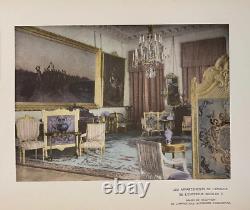
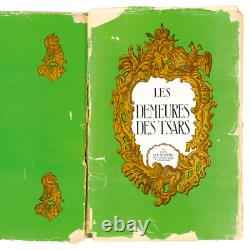
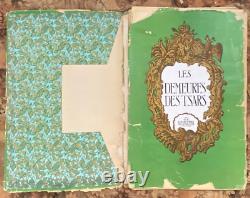
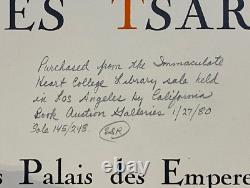
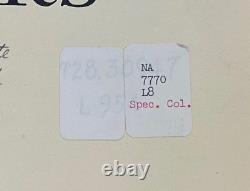
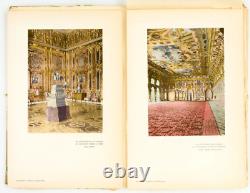
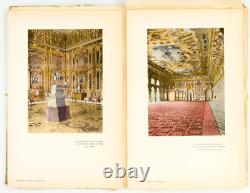
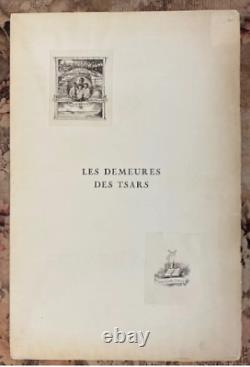
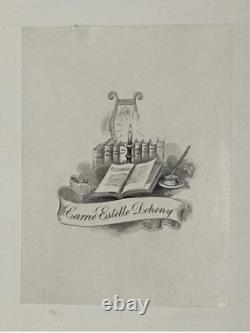
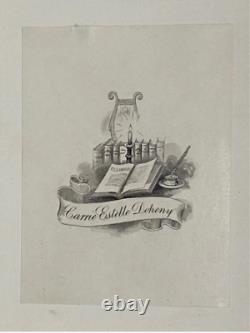
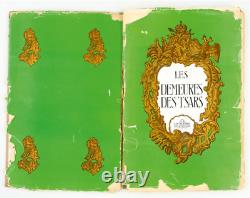
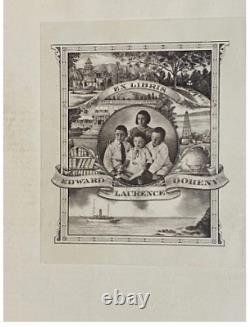
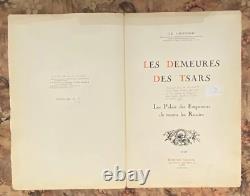
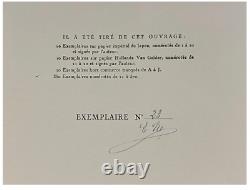
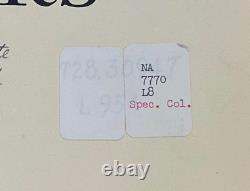
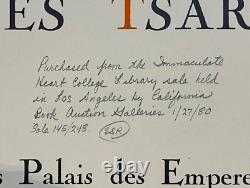
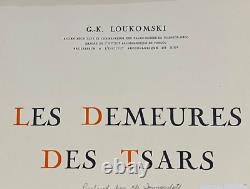
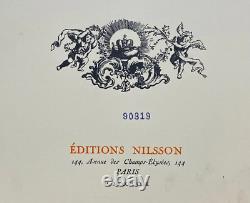
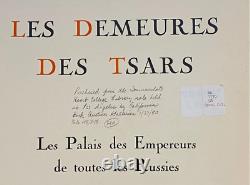

Palaces of the Emperors of all Russia. "Les demeures des Tsars" Loukomski G. A folder with magnificent lithographs depicting the interior decoration of Tsarskoye Selo. It is an example of one of the first color autochromes.
The publication was published in Paris in the amount of 370 numbered copies. Description in French, attached is a list of lithographs, as well as 24 beautiful lithographs on separate sheets, laid with tracing paper.
The publisher's dust jacket has been preserved. 10 copies on imperial paper from Japan.
10 copies on Dutch Van Gelder paper. 10 commercial publications (numbered A to J). (Professor at the Kyiv Institute of Archeology, member of the Moscow Institute of Archeology, member of the commission for the preservation of artistic values??of the palaces of Tsarskoye Selo). Les Demeures des Tsars: Les Palais des Empereurs de Toutes les Russies. Limited edition, copy number 10 of 370 produced. Illustrated edition: 24 photographic illustrations of the chambers of Tsarskoye Selo, 3 of them in color with hand-drawn details, 8 pages of text, a list of illustrations. On the night of August 1 (14), 1917, the family of the last Russian emperor left their beloved home - the Alexander Palace.
The Royal Family lived here. Four hours after the departure of the family of Nicholas II, G. Lukomsky, as chairman of the Commission for Acceptance and Accounting of Property of the Tsarskoye Selo Palace Administration, received the Alexander Palace. In May 1917, he petitioned the commissioner of the Provisional Government over the former Ministry of the Imperial Court and Appanages F. Golovin: For better cataloging of inventory of artistic significance, it would be desirable to photograph all the most valuable items in the palaces, as well as secure for posterity and science of the order and type of furniture arrangement in 1917, that is, by the time of the end of the Russian monarchy.
Lukomsky received permission to film in the palaces of Tsarskoye Selo. For this purpose, former stable colonel photographer Andrei Andreevich Zeest was invited, who agreed to carry out the proposed work on the condition that he was provided with ready-made material (records). In 1907, the Lumière brothers developed a mosaic three-color screen and released "autochrome" plates, some of the first color images in the history of photography. Autochrome - plates of black and white emulsion for color photography, with a raster of grains of colored starch, coated with waterproof varnish. After processing it turned out positive.Their production was based on experiments in mixing colors - red, green and blue. By mixing these colors, the most perfect results were obtained. Complex colors, composed of "primary" ones, coincide in hue with the spectral ones, but do not reach full saturation.
This method is called the additive method of the color mixing process, and raster color photography also applies to it. Autochrome was used until 1935. Seest by this time was already of advanced age, had poor health, and could not carry a photographic apparatus and equipment for shooting with him. On June 3, 1917, Lukomsky turned to the Commissioner of the Provisional Government Commission, Baron B. Shteingel with a request to provide retired stable officer A.
Zeest "the crew from the Stable Department of the Provisional Government", since he was deprived of this right due to his resignation. Initially, it was planned to shoot about 250 color photographs and 1000 black and white ones, and the plates were supposed to be sent from Paris. The materials for the work, which included color images of interiors, objects of decorative and applied art and paintings in the Catherine and Alexander Palaces, made on glass, were supplied by the Petrograd branch of the photographic company I. Which existed since 1882, which was located on Kazanskaya Street, 5. According to a notice addressed to Zeest dated May 25, 1917, a batch of autochrome records was received in different sizes from 4.5 x 10.7 cm to 18 x 24 cm.It also notes that the records were on the road for a long time and arrived overdue, but after an experiment was carried out on them, they turned out to be nevertheless quite suitable for use. 3 The photographer ordered plates measuring 9 x 12 cm for work.
Filming in the Catherine Palace began in June, and in the Alexander Palace - on August 14, 1917. Already on October 11, in an explanatory note attached to the paid bills, Lukomsky certified with his signature that all the color photographs required for the Commission in the amount of 140 pieces4 were accepted and are located in the Office.

